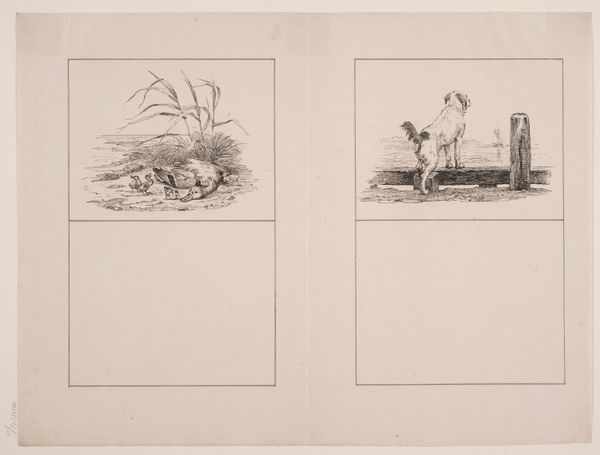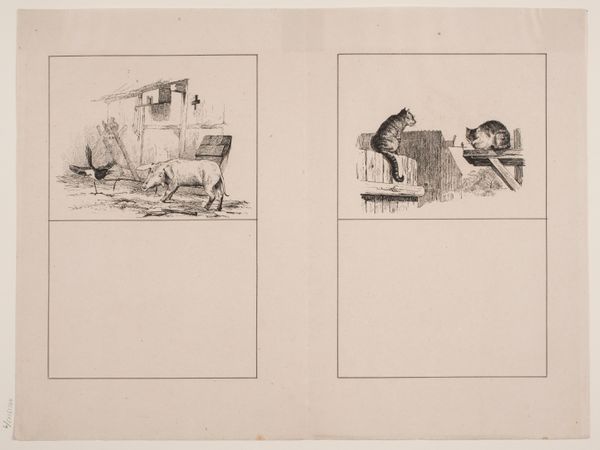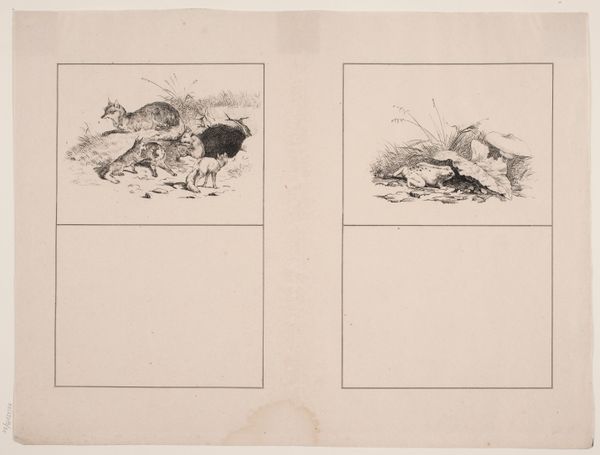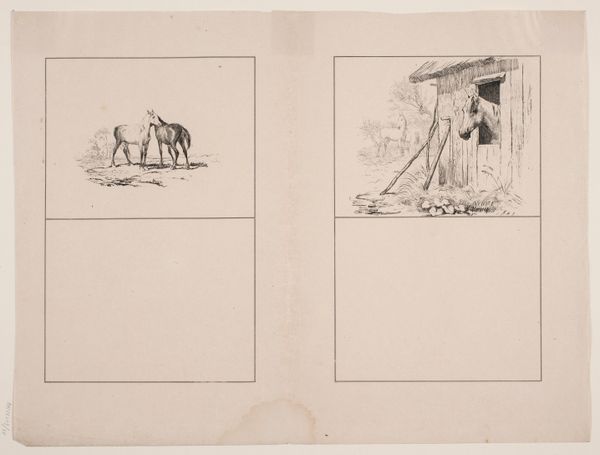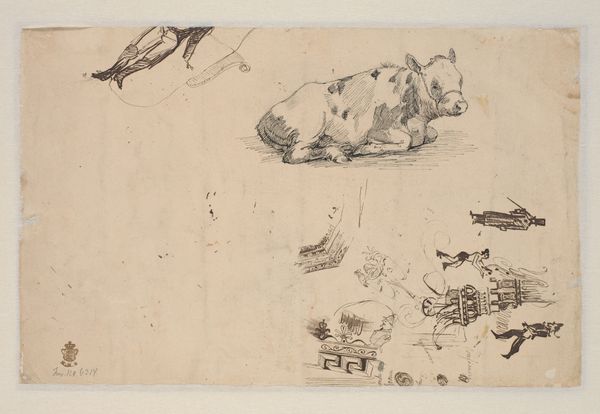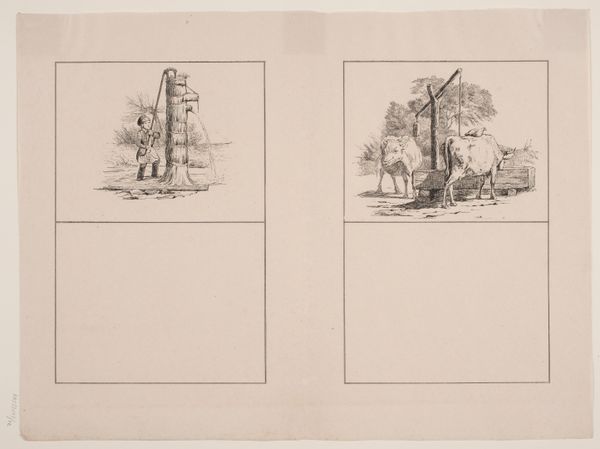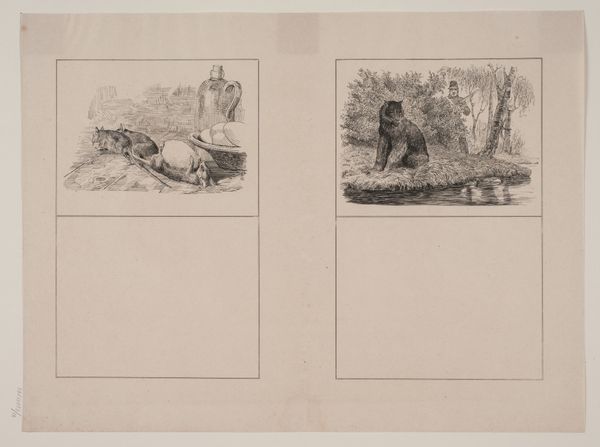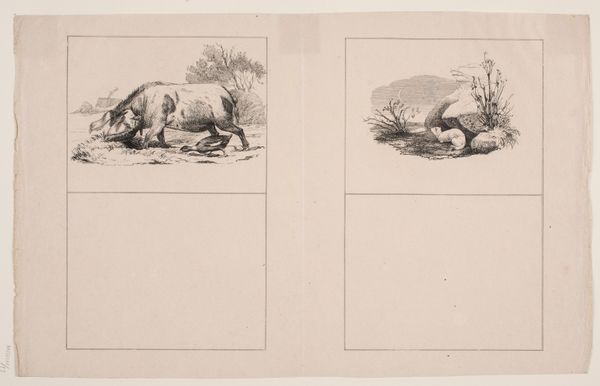
lithograph, print
#
pencil drawn
#
light pencil work
#
ink drawing
#
lithograph
# print
#
pencil sketch
#
etching
#
ink drawing experimentation
#
pen-ink sketch
#
sketchbook drawing
#
pencil work
#
sketchbook art
Dimensions: 277 mm (height) x 362 mm (width) (bladmaal)
Curator: This lithograph, dating to 1845, is entitled "Bissekræmmeren og hans hund; Abekatten", translating to "The Haberdasher and his Dog; The Monkey". It’s by Adolph Kittendorff. Editor: The stark contrast between the two panels really strikes me. One presents a scene of apparent European industry, while the other evokes a remote, almost desolate, tropical setting. Curator: Note the very clear division of labor in the scene with the haberdasher – the man, the dog, the implied production for sale in the loaded cart. What’s fascinating is how Kittendorff uses the lithographic process itself to almost "manufacture" this image, creating multiples that mirror the mass production suggested in the image itself. Editor: The monkey is such a stark contrast. There is an otherness implied by its location and, yet, it appears to be inspecting an object like the man and dog, giving it a potential shared symbol of curiosity or an object lesson, perhaps on the effect of encroaching industrial culture. Curator: Absolutely. Consider the materials too. Lithography is dependent on particular stones, the skilled labor to process them, the press... everything has a value attached and reinforces that socioeconomic depiction in the left panel. Are you suggesting that there are shared characteristics to focus on with both scenes? Editor: Yes, while at first they may seem polar opposites, consider them instead two sides of a global coin, the spread of manufactured goods represented in both contexts. We are looking at these people's effects on animals and on environments, or vice versa, their effects on one another. The monkey on a faraway beach examining an item like some curious artifact connects to themes of colonial encounter and trade. Curator: I see what you're driving at. Kittendorff provides commentary through juxtaposition and a rather refined printing process. There is inherent meaning embedded in this industrial process – the very same one that enables distribution of goods that influence environments the world over. Editor: Exactly! By bringing together these two seemingly disconnected scenes through careful visual metaphor, Kittendorff prompts us to consider the broader context in a specific period of the industrial age. Curator: A perfect illustration of how an artwork created from industrial processes such as this print allows us to ponder production’s impact and consequence across time. Editor: It shows the rich and nuanced interplay of meaning across what initially seems to be distinct environments and highlights the connections between commerce and culture.
Comments
No comments
Be the first to comment and join the conversation on the ultimate creative platform.
